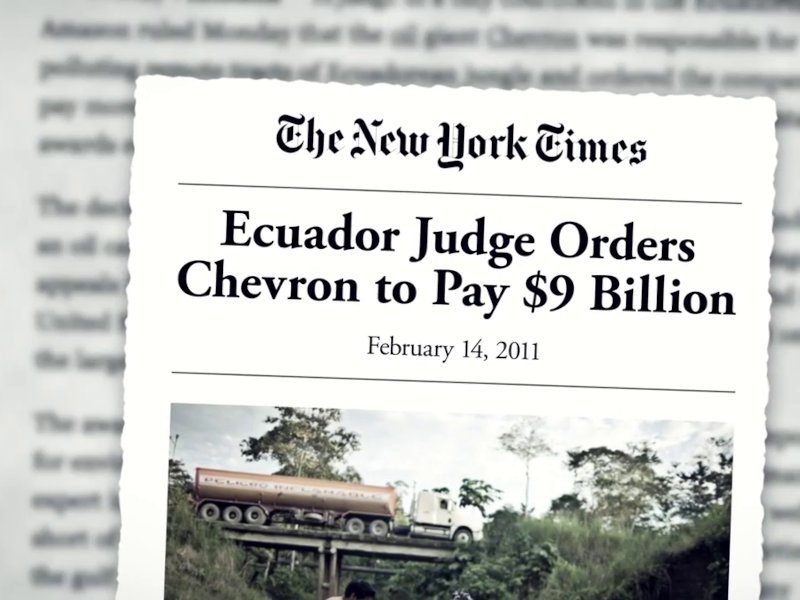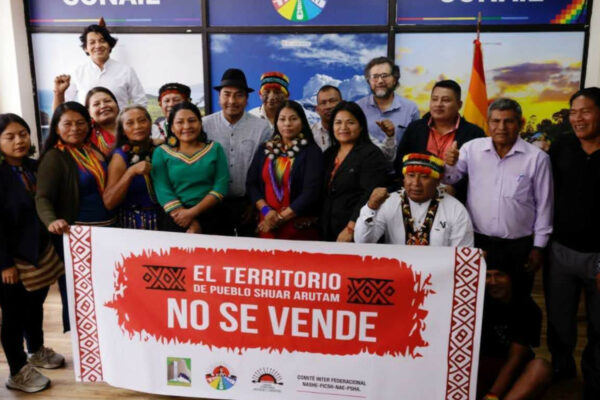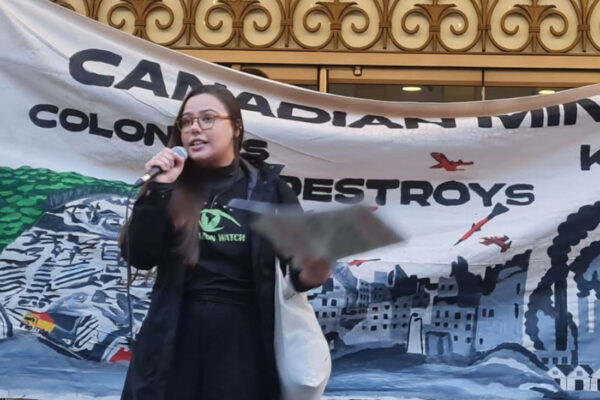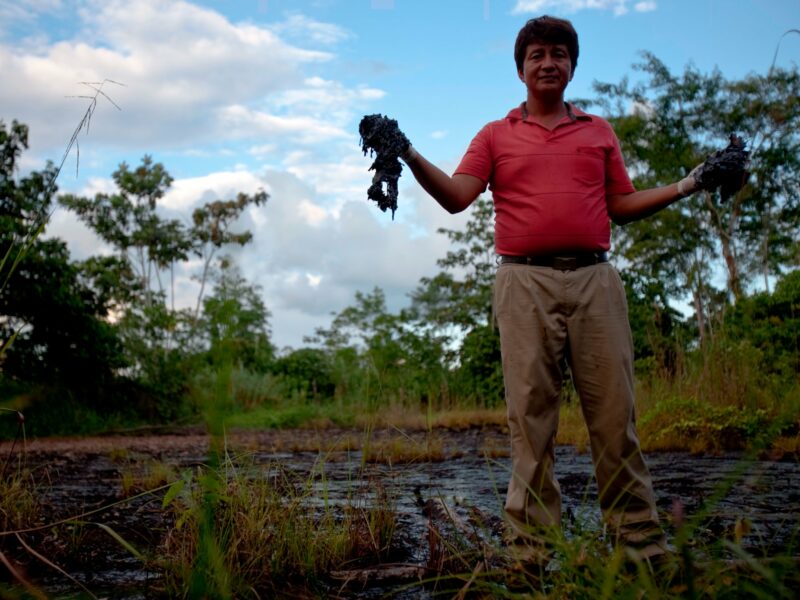February 14, 2011, was a monumental day in the history of environmental justice, corporate accountability, and human rights. This Sunday marks the 10th anniversary of an Ecuadorian court’s groundbreaking judgment holding Chevron, one of the world’s largest corporations, accountable for deliberate pollution in the Amazon. This civil court victory was the first of its kind and forever changed the range of possibilities for corporate accountability and environmental justice. We must lift up this date and moment for the unprecedented victory that it represents.
This is what the victors said at the time of the decision:
“We believe today’s judgment affirms what the plaintiffs have contended for the past 18 years about Chevron’s intentional and unlawful contamination of Ecuador’s rainforest. Rather than accept that responsibility, Chevron has launched a campaign of warfare against the Ecuadorian courts and the impoverished victims of its unfortunate practices.”
Pablo Fajardo, the plaintiffs’ lead attorney in Ecuador
“This is a great victory. Our fight won’t stop until Chevron is held accountable and pays for all the damage it left in the Amazon rainforest.”
Emergildo Criollo, a Cofán leader and plaintiff in the case
Three thousand six hundred and fifty days have passed since that judgment was issued. On every one of those days, more toxic contamination has leached into the groundwater or flowed right into the rivers and streams in the Ecuadorian Amazon.

Three thousand six hundred and fifty days.
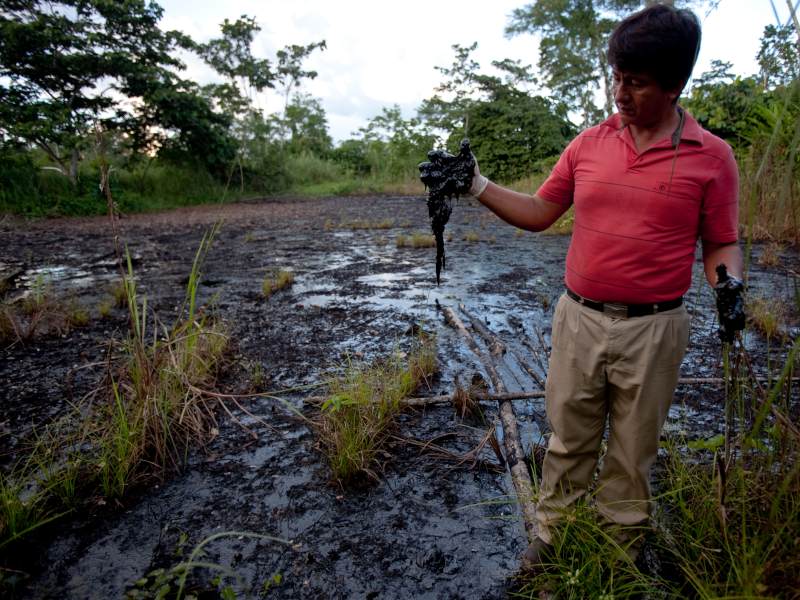
Over 1,400 people have died as a wave of cancer and other illnesses have spread through the region.
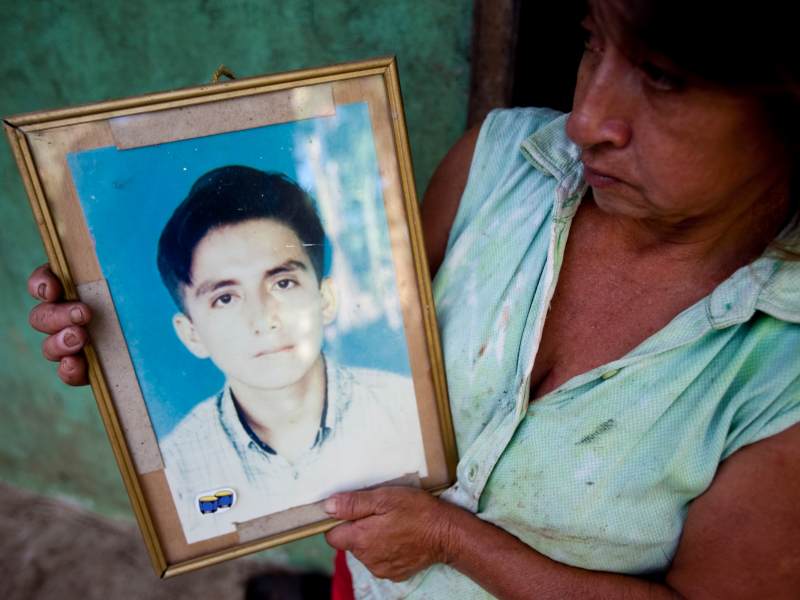
The toxic waste covers an area the size of Manhattan.
Meanwhile, in those same three thousand six hundred and fifty days, Chevron has reported well over $100 billion in profit and left a multitude of other human rights and environmental crimes behind in its wake.
How did they win?
Despite the incredible odds against them, Indigenous and farmer communities won the largest-ever award for environmental damages against an oil company after eighteen years of legal battles. Based mostly on Chevron’s own scientific samples and over 200,000 pages of evidence, a judge in Ecuador ruled that Chevron must pay $9.5 billion for environmental remediation and to alleviate the health crisis it created. An additional $9.5 billion in punitive damages was awarded unless the oil giant agreed to apologize to the people of Ecuador within two weeks. Chevron never did, although the punitive damages were later determined to be unconstitutional by Ecuador’s supreme court. That decision was later upheld by 28 other Ecuadorian appellate judges who examined and dismissed Chevron’s many and frivolous allegations of fraud. It remains one of the most significant cases in Ecuadorian history.
Rather than defend itself on the facts, Chevron did everything it could to stop the trial in Ecuador. It pressured the judges and hired criminals to try to entrap them, filed thousands of motions to delay the proceedings, hired all the local labs so the plaintiffs couldn’t get soil samples analyzed, and took out ads smearing the court and its judges. It even tried to get the U.S. government to pressure Ecuador to make the case disappear.
In a way, Chevron’s refusal to publicly apologize to the people of Ecuador for its admitted crime shows you everything you need to know about this case: the company never operated in good faith. From its decision to pollute, to its attempt to hide evidence of spills while operating, to its active undermining and then ultimately ignoring the ruling against it. Chevron has refused to pay and instead told the Ecuadorian people to go to their own government for help.
But still, Chevron lost.
The fact that the Ecuadorians won and have a legitimate, internationally-recognized judgment for $9.5 billion against the second-largest oil company from the most “powerful nation” on earth is nothing less than miraculous. But then again, the evidence against Chevron – including its own admission of having willfully dumped it there as a cost-saving measure – was impossible to overlook.
How has an oil company with a horrific track record like Chevron and a massive environmental judgment against it for deliberate dumping been able to walk away without paying a dime for all these years?
It’s because the lives of the people in the Ecuadorian Amazon and the words of the judges in Ecuador simply don’t matter to them. Evidently, not only to them but neither to the U.S. judiciary.
History of racism towards the Ecuadorians
The U.S. media behaves as if this case is over. The reason is very American, it’s racism.
The U.S. judicial system is also eager to deny access to justice to people harmed in other countries by the deliberate acts of a U.S. corporation. When the Ecuadorians tried to sue in New York, U.S. federal judges denied them access to justice and after an eight-year long process, said they had no right to sue in the U.S. Two thousand nine hundred and twenty-two days of more poisoning followed.
So when the Ecuadorians refiled their case in Ecuador – the venue Chevron demanded – the company immediately objected to the proceeding despite having agreed in U.S. courts to abide by a decision in Ecuador. It proceeded to spend eight more years trying to derail the trial. Three thousand more days of poisoning.
Two weeks before the Ecuadorian judgment was issued, U.S. courts allowed Chevron to proactively file a SLAPP suit in the very same district where the Ecuadorians had first brought their case. Suddenly the U.S. was the proper venue.
The U.S. courts let Chevron manipulate the process. The Chevron counter SLAPP suit was presented before the Ecuadorians brought their judgment to the U.S. for enforcement. They allowed a farce-trial to proceed by denying requests for a jury and forbidding the use of evidence of Chevron’s crime. A lone U.S. judge and former tobacco industry lawyer, Lewis Kaplan, determined that the Ecuadorian judgment – which had been reviewed and confirmed by appeals courts and the Ecuadorian supreme court – was “procured by fraud” without reading the decision, visiting Ecuador, or examining a shred of evidence of Chevron’s admitted crime. That same judge allowed Chevron’s key witness to be paid $2 million by the oil company, be coached over fifty days, and present demonstrably false evidence in court. The bribed witness later admitted he lied for a bigger payout from Chevron. I was there and can attest that it was a complete sham trial.
Kaplan’s decision – which specifically says it makes no determination about what Chevron did in the Amazon – has since been used by Chevron and their lawyers to intimidate justice advocates, silence journalists, and deprive human rights lawyer Steven Donziger of his passport, livelihood, and freedom.
Steven’s unprecedented house arrest for his work on this case is what happens when you take on big oil and win. The climate justice movement is at a precarious moment due to companies like Chevron and their legal attacks.
Ten years after a binding judgement was reached based on overwhelming evidence in an effort by people literally dying from the contamination as the trial played out, Chevron is placing Super Bowl ads and tweeting about how it respects community water supplies. Their legal bullies at Gibson Dunn & Crutcher even announced THIS MONTH they are launching a new “environmental practice.”
Weird I didn’t see this in Chevron’s Super Bowl commercial https://t.co/XFJhdxL8NL— Emily Atkin (@emorwee) February 8, 2021
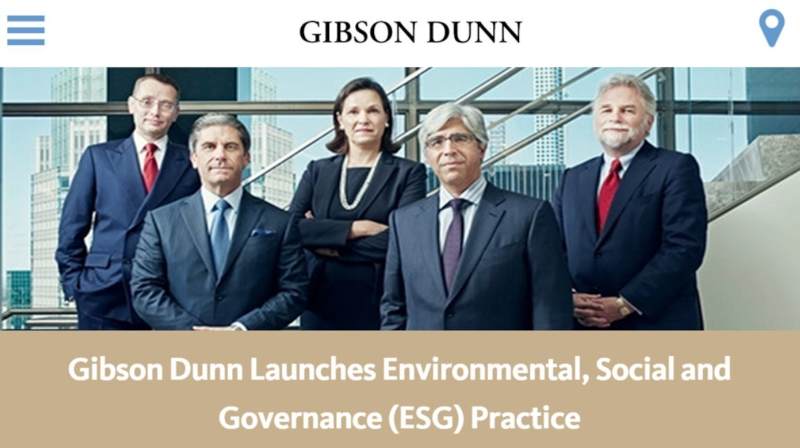
The Ecuadorian decision against Chevron embodies why efforts for environmental justice must not be abandoned. These Indigenous and rural frontline communities were deliberately harmed by a U.S. oil company for profit. Not even an admission of guilt, definitive proof, international condemnation, and 29 judges evaluating and upholding a verdict can stand against the decision of one white U.S. judge. Kaplan’s embarrassingly flawed decision has been upheld by higher courts that are more concerned with protecting one of their own than with justice.
This is what climate justice advocates should fear most. Chevron has spent an estimated $2 billion to fight, intimate, bribe, and threaten those who continue to push for justice and a clean up in Ecuador.
What’s next is up to our movement

“Justice does exist. I can now dream of drinking clean water, water with no oil residue, and that the earth will begin to clean and heal.”
Guillermo Grefa, a Kichwa representative to the Assembly of Affected Communities in 2011.
Guellermo’s dream has not been realized, and there’s no such thing as a “climate justice” movement if Chevron is allowed to evade paying this judgment. Honoring the victims and joining the fight begins by making this case front and center in the climate movement. Chevron is a criminal on the run and we must treat it like one. Ten years is already three thousand six hundred and fifty days too long to wait for justice.
Post script
To further expose the imbalance, racism, and lack of justice just consider that in the last three thousand six hundred and fifty days:

Pablo Fajardo has continued working with the Indigenous communities in the Amazon to enforce the verdict and has taken on Ecuador’s state owned oil company in the meantime.

Donald Moncayo has given hundreds if not thousands of “toxi-tours” to journalists and others to see Chevron’s oil waste pits and meet the affected people.
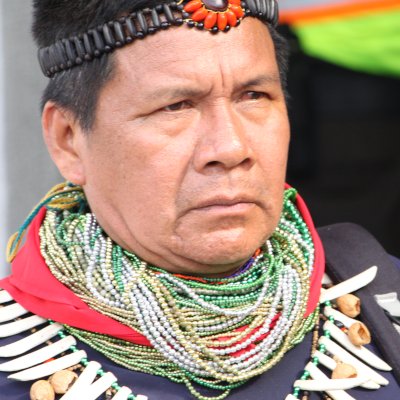
Emergildo Criollo, who lost two children to Texaco’s contamination years ago, has helped install hundreds of water filtration systems in Indigenous communities and expanded to many community development projects with ClearWater and the Ceibo Alliance.
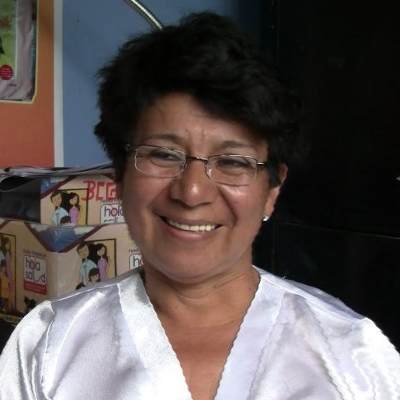
Rosa Moreno, the legendary nurse in Ecuador who spent three decades treating children and others afflicted with cancer in the area of Chevron’s oil pollution, succumbed to cancer in 2017.
Meanwhile, these are the people who have since benefitted from delayed justice:
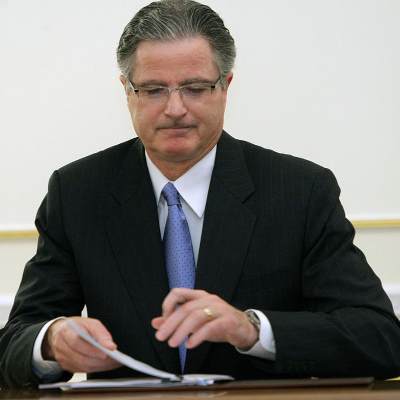
John Watson (principle architect of the Texaco merger) was Chevron Chair and CEO from 2010 until 2018. His net worth was estimated at more than $100 million. That’s roughly $34,000 for every day he was CEO, every day Chevron’s oil waste poisoned local communities in Ecuador.

Current Chevron CEO Mike Wirth, who took over in 2018, is reportedly worth $45 million. That’s roughly $41,000 for every day in the last three years.

Infamous Chevron “kill step” partner at Gibson Dunn & Crutcher Randy Mastro who oversaw the bribing of Chevron’s key witness Alberto Guerra, has multiple homes for many millions of dollars and charged Chevron $1100 per hour for his work on their cases over several years.
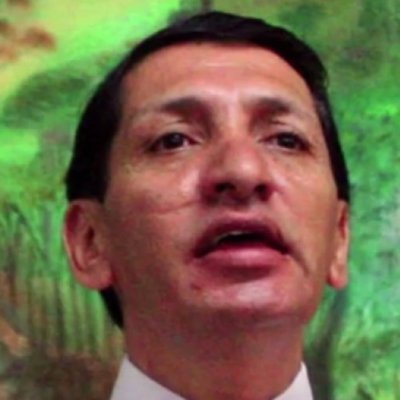
Chevron’s discredited key witness, Alberto Guerra lives in a house bought for him by Chevron in an undisclosed location in the U.S., drives a Chevron car, and is likely still paid a monthly stipend of over $12,000.


